Hei Mahi Māra Plasma: the future of agriculture
Jun 29, 2021

A beginner’s guide to growing organic vegetables
Nā Tremane Barr
 Matariki is a time of relative quiet in the māra, providing space for reflection on the past growing season and what can be done better in preparation for spring.
Matariki is a time of relative quiet in the māra, providing space for reflection on the past growing season and what can be done better in preparation for spring.
Previously I wrote about how I was going to conduct an experiment in my māra with new GANS plasma products, developed from the theories of Iranian nuclear engineer, Mehran Tavakoli Keshe.
For the past three years I have used GANS plasma products in my māra and I’ve had astounding results, with health and productivity boosted by between 50 to 100 percent. This could be a real game-changer for organic agriculture, making it more productive than conventional farming practices. In fact, I was prompted to write about my findings after a conversation with an experienced market gardener, who was shocked by the productivity of my potatoes. I had just come to expect productivity like this – broccoli now produces prolifically for five or six months; my freezer could not take the excess of tomatoes this summer; we had cucumbers galore. My cherry, apple and feijoa trees are now producing bigger, and more fruits than ever. These products have even allowed me to grow kūmara in Ōtautahi.
The gains didn’t happen overnight, and the basics of organic gardening still need to be applied to individual crops and their particular needs – it’s science, not magic.
The Keshe Foundation claims plasma technology in agriculture will herald a new age of enhancing the health and productivity of soils, plants and food. From my experience, I have to agree with them.
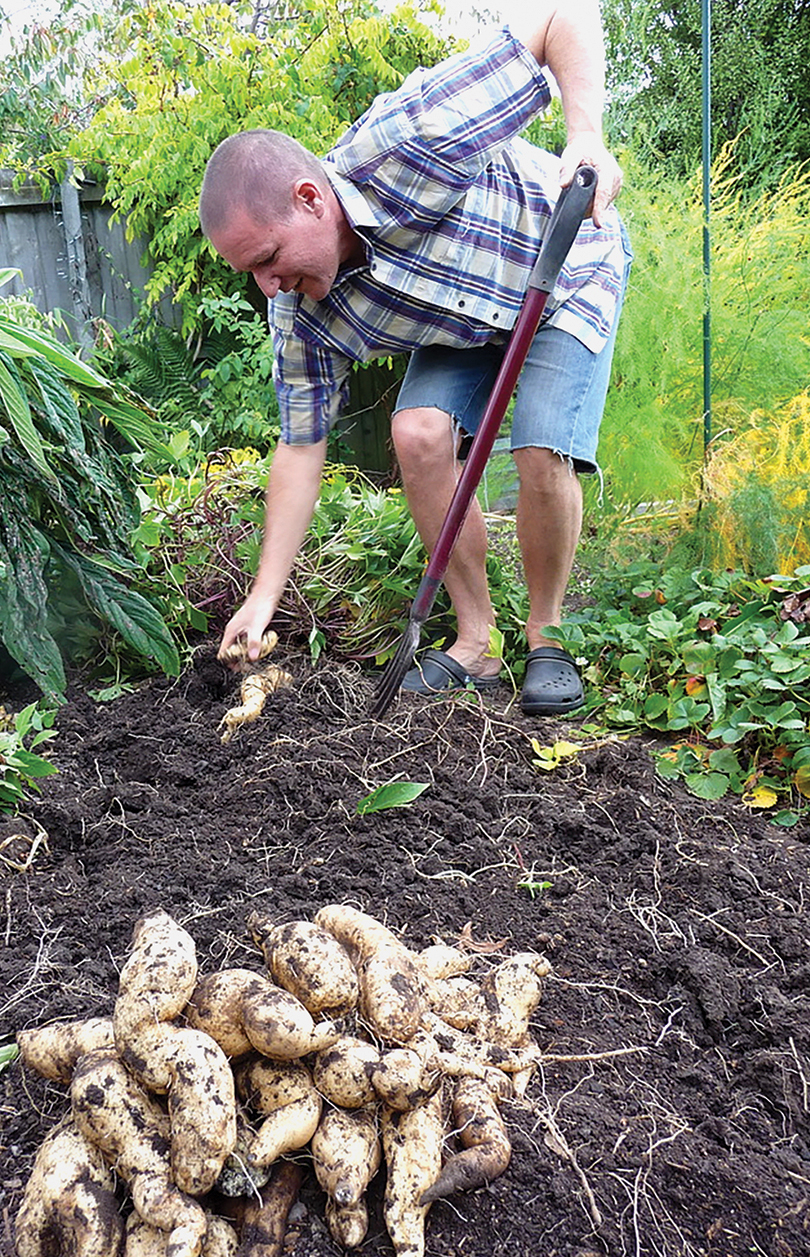
Above: Tremane in the māra harvesting kūmara.
PLASMA
Keshe’s theories are based on the hypothesis that everything, from the largest galaxies to the smallest organisms, has its own electromagnetic gravitational field. These combine different types of magnetic and gravitational fields of the same strength. The coexistence and interaction of these fields leads to the creation of a toroidal (ring-shaped) magnetosphere for all entities – whether it be a galaxy, the sun, a worm, or bacteria.
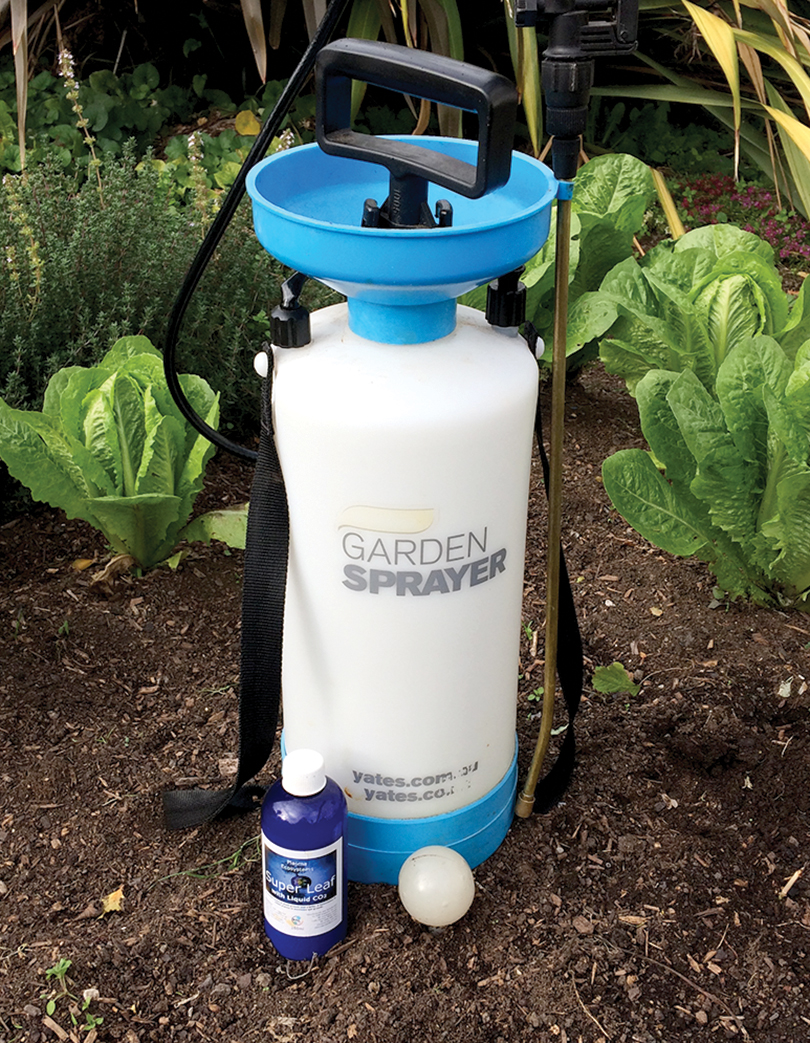
Above: GANS plasma essentials.
GANS
According to Keshe, plants grow primarily by interacting with the magnetic and gravitational plasma fields. Based on this theory, plasma products to support and promote the energy fields of plants and soil life, through using liquid GANS, have been developed. A new state of matter – consisting of a molecule of gas (“GA”) which becomes a nano (“N”) of itself and appears as a solid (“S”) state of matter – GANS can be created in many ways. Largely, this is done through the interaction of different types of metal plates in a water solution to produce the desired type of GANS.
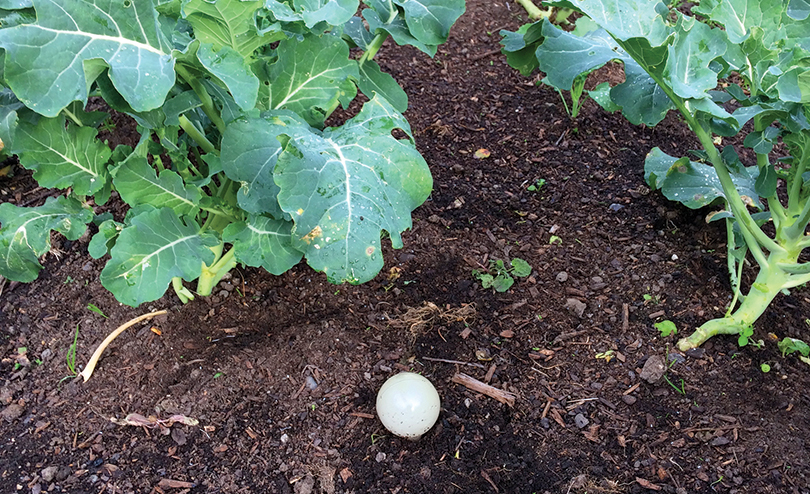
Above: Groglobe in broccoli crop.
Plasma ecosystem GANS products
Early on I tried to make my own GANS, but gave up when I realised how much time it would take to perfect the right type of blends. Instead, I’ve turned to buying products from Jim and Lisa MacDonald in Australia (https://plasmainnature.com/agriculture/). The four main plasma products I have used are:
1. Super Leaf – plants get 80 percent of their energy requirements through their leaf structure. I mix this in with the liquid fertiliser I spray regularly on the plants in the garden.
2. Root Boost – helps encourage soil microbes and biology to thrive. Used when preparing the soil for new plantings and when transplanting seedlings.
3. Germinate – enhances the growth of seeds when they are soaked in this solution four to 24 hours before planting.
4. Garden GroGlobes –plastic containers filled with a GANS gel, these can be placed around the garden to help create a positive dome of energy in the māra.
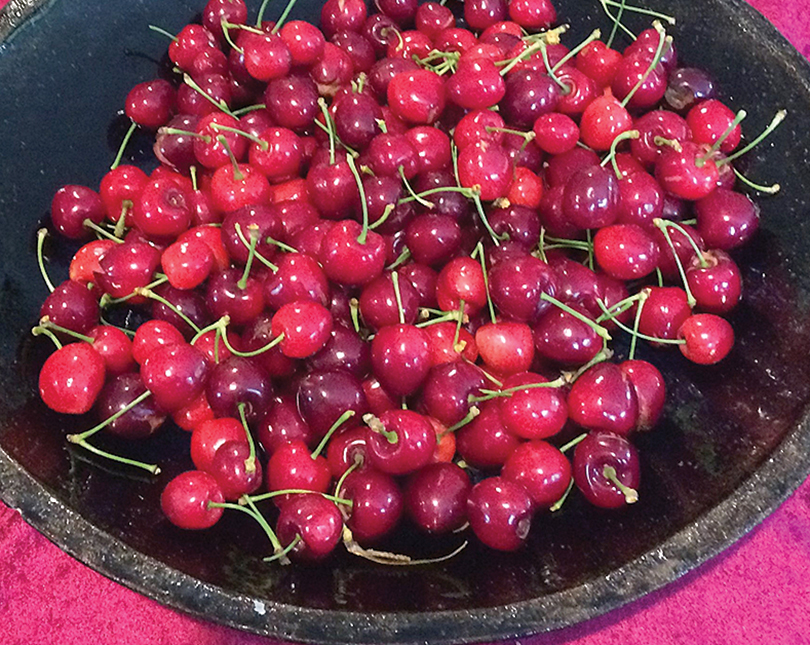
Above: An abundance of cherries and tomatoes.
These products are somewhat similar to those used in biodynamic farming, in that they promote biological soil fertility, reduce pest and disease problems and enhance nutrient content in plants and crops. However, the plasma products can be used at any time regardless of the biodynamic moon calendar, making them easier to work with in addition to a greater level of productivity.
One thing I have learned is how vital it is to follow the instructions on the quantity of plasma GANS used: if the recommended dose is exceeded, or applied too often, it can actually reduce plant health and productivity. There is a real sweet spot between too much and too little, and it can take experimentation to get it right.
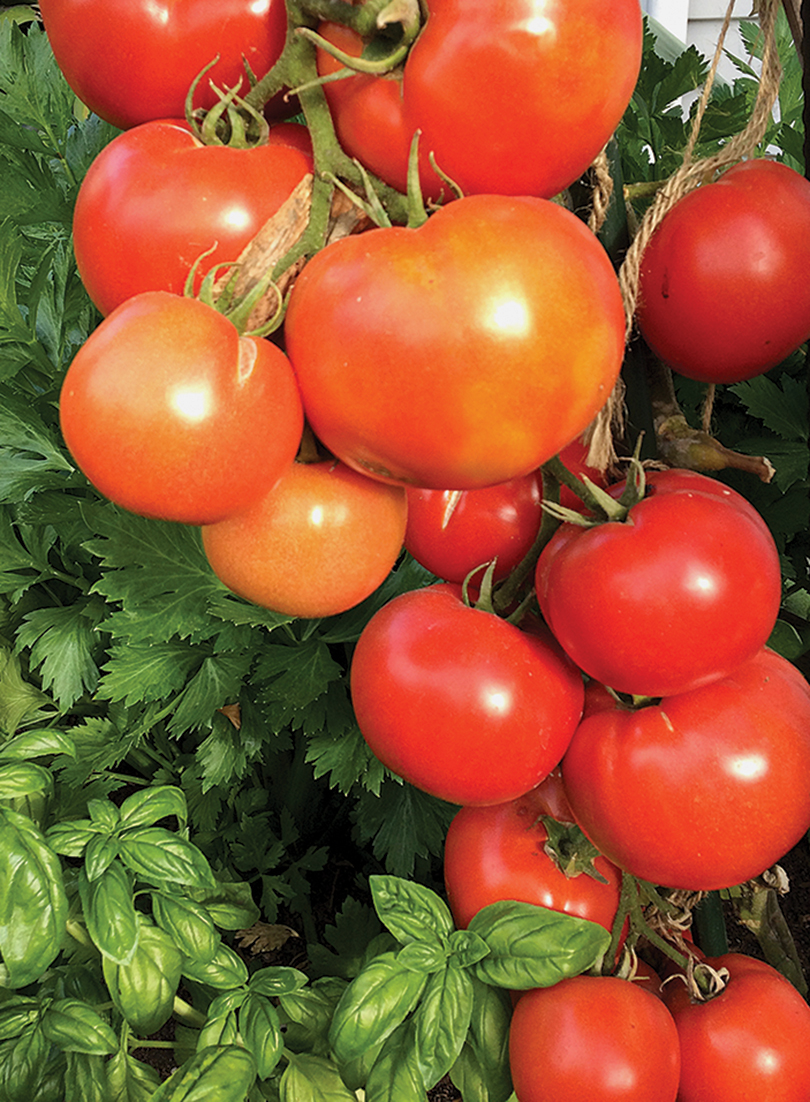
The Keshe Foundation claims plasma technology in agriculture will herald a new age of enhancing the health and productivity of soils, plants and food. From my experience, I have to agree with them. However, the experience from my māra is not scientifically-conclusive proof and, in an ideal world, scientific research would be done to test the claims for plasma in agriculture. Until that happens, give them a go in your own māra – and be prepared to be pleasantly surprised.
Tremane Barr is Ngāi Tahu/Kāti Māhaki ki Makaawhio. He has been gardening organically for more than 30 years. Tremane is currently a self-employed mauripreneur whose whānau owned and run business sells essential oils and natural skin care products containing native plant extracts: https://zurma.co.nz/